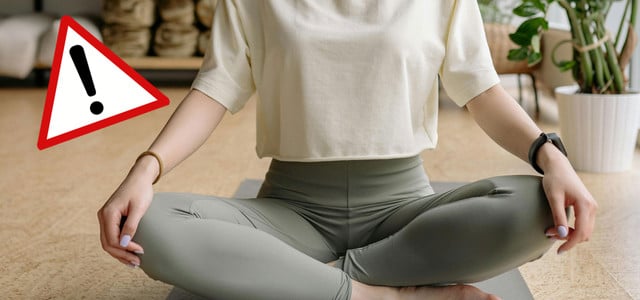
In yoga class, when playing with the child or when the coveted seats on the sofa are occupied: situations in which we sit cross-legged on the floor. How healthy is that?
Did you know why the cross-legged seat is called what it is? In fact, this is what the typical working posture of tailors used to look like – with their legs crossed on a table. This meant they could avoid the materials coming into contact with the dusty floor.
Nowadays, the cross-legged seat is the number one position for many when sitting on the ground – whether at a picnic in the park or playing with their child. But how healthy is this sitting position?
Sitting cross-legged: A blessing for the hip joint
Anyone who sits cross-legged from time to time – and without overdoing it – is definitely doing their body good, according to orthopedic surgeon Martin Rinio, medical director of the Gundelfingen Joint Clinic. And for these reasons:
- The muscles in the hips and thighs are stretched
- External rotation of the hip stretches the ligaments around the hip joint capsule, causing it to expand – this helps with cartilage health
But be careful with these symptoms!
Sitting with your legs crossed is not without its disadvantages: we tend to let our shoulders fall forward. This is unfavorable for the spine. Orthopedist Rinio therefore advises: If you have back problems, you should avoid sitting cross-legged altogether.
This is especially true for anyone who has problems with a sliding vertebra. This causes a vertebra to leave its normal position within the spine – a shift that can be noticeable as pain, tingling and numbness.
And everyone else? Whenever you sit cross-legged, you should always check how you are sitting. If you find yourself in a crooked shrimp position, straighten up.
You should adjust the seat slightly every 10 to 15 minutes at the latest. “What’s good is the continuous change between upright, leaning forward and leaning back postures and the frequent shifting of the weight from one half of the buttocks to the other,” says Rinio. If you experience pain while sitting cross-legged, you should leave this position.
Similar and yet completely different: the lotus position
And then there is the lotus position, which everyone who is deeply into the topics of yoga and meditation should know. While in the cross-legged position one leg lies loosely on the floor in front of the other, the lotus position is more demanding. The feet “park” on the opposite thighs.
Compared to the cross-legged position, the lotus position is easier on the back because the pelvis tilts forward. This allows the spine to straighten, says Rinio. However, the lotus position places more strain on the joints, such as the knees, than the classic cross-legged position. Anyone who has problems with their menisci should avoid it.
The same applies to the lotus position: please do not overdo it. Anyone who wants to spend a long time in the lotus position – for example when meditating – should work towards this. This can be done with exercises that promote hip mobility.
An example is the “butterfly”: This involves placing the soles of your feet together, with your knees pointing outwards. You then grab your feet with your hands and pull them as close as possible to your buttocks. You can rock your knees slightly while you do this – and imitate the fluttering movements of a butterfly.
** marked with ** or orange underlined Links to sources of supply are partly partner links: If you buy here, you are actively supporting Techzle\.com, because we then receive a small part of the sales proceeds. More info.